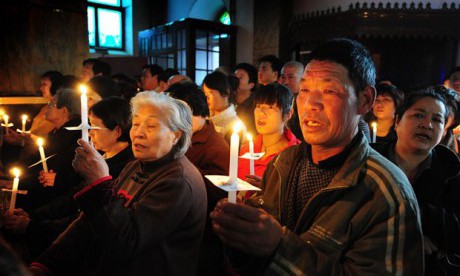The coastal city of Wenzhou is sometimes called China’s Jerusalem.
Ringed by mountains and far from the capital, Beijing, it has long been a haven for a religion that China’s Communist leaders view with deep unease: Christianity.
Most cities of its size, with about 9m people, have no more than a dozen or so visibly Christian buildings.
Until recently, in Wenzhou, hundreds of crosses decorated church roofs.
This year, however, more than 230 have been classed as “illegal structures” and removed.
Videos posted on the internet show crowds of parishioners trying to form a human shield around their churches.
Dozens have been injured. Other films show weeping believers defiantly singing hymns as huge red crosses are hoisted off the buildings.
In April one of Wenzhou’s largest churches was completely demolished.
Officials are untroubled by the clash between the city’s famously freewheeling capitalism and the Communist Party’s ideology, yet still see religion and its symbols as affronts to the party’s atheism.
Christians in China have long suffered persecution.
Under Mao Zedong, freedom of belief was enshrined in the new Communist constitution (largely to accommodate Muslims and Tibetan Buddhists in the west of the country).
Yet perhaps as many as half a million Christians were harried to death, and tens of thousands more were sent to labour camps.
Since the death of Mao in 1976, the party has slowly allowed more religious freedom.
Most of the churches in Wenzhou are so-called “Three Self” churches, of which there are about 57,000 round the country.
These, in the official jargon, are self-supporting, self-governed and self-propagating (therefore closed to foreign influence).
They profess loyalty to China, and are registered with the government.
But many of those in Wenzhou had obviously incurred official displeasure all the same; and most of the Christians who survived Maoist persecution, along with many new believers, refuse to join such churches anyway, continuing to meet in unregistered “house churches”, which the party for a long time tried to suppress. Continue reading
Sources
- The Economist
- Image: The Telegraph
News category: Features.




